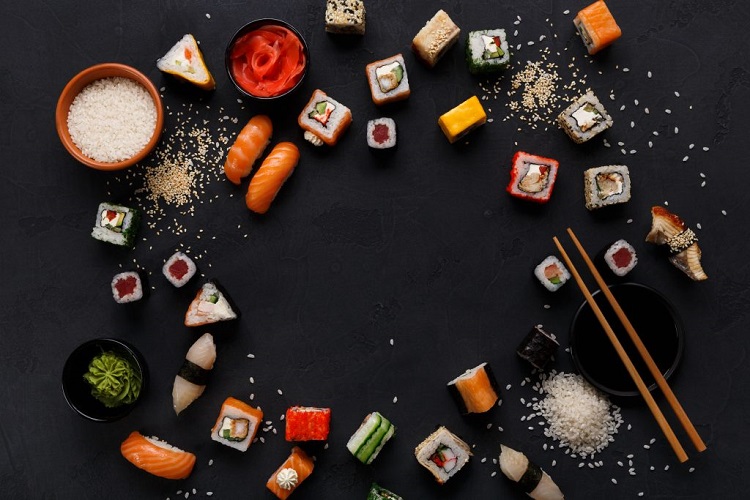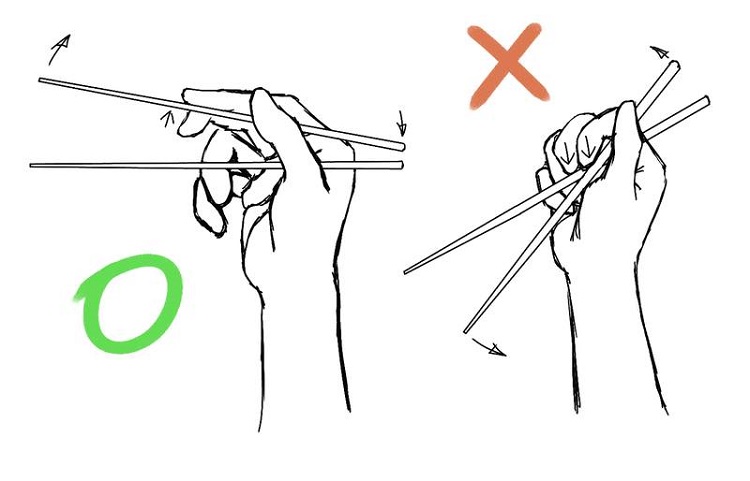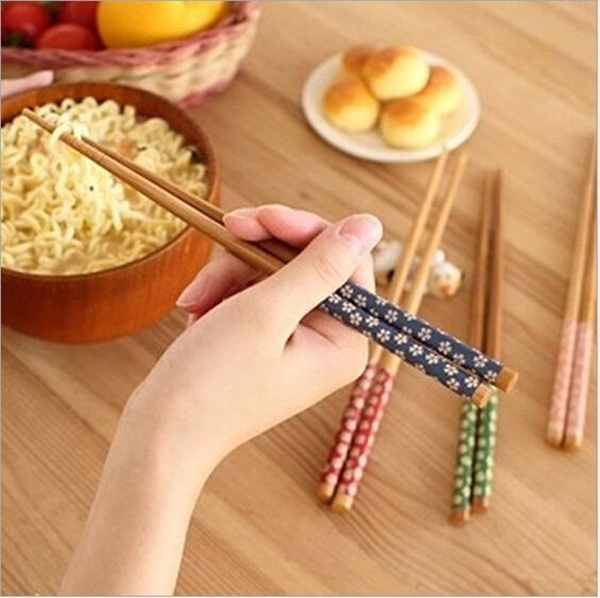Japan Blog
Aug 15, 2024
Guide to Living in Japan: Eating Etiquette

Given that Japanese cuisine has been designated as a UNESCO Intangible Cultural Heritage and Japan boasts the largest number of Michelin Star restaurants in the world, it’s clear that Japanese food is highly regarded globally, especially by the Japanese themselves. Japanese people are passionate about food, often exploring new cuisines and trends. However, their deep appreciation for their own cuisine remains steadfast.
For visitors to Japan, food will undoubtedly be a highlight. Understanding Japanese Eating Etiquette is crucial when dining out or eating with Japanese people. Every culture has its own dining rules, passed down through generations as courteous “best practices.” While some practices are universally understood, Japan’s long history and rich culture have produced unique and sometimes counter-intuitive dining etiquette that non-locals should be aware of.
Japanese Eating Etiquette
Japanese Language Communication
If there’s one thing that will help you when eating in Japan, it’s remembering key Japanese phrases related to food. Essential phrases range from “itadakimasu!”—similar to saying “Grace”—to survival Japanese phrases necessary for effectively ordering and communicating at restaurants. Since most Japanese restaurant staff primarily speak Japanese and may not be comfortable with English, knowing these expressions is crucial. At the very least, print out this guide or memorize the following expressions to dine like a local in Japan- Itadakimas(u) – Let’s dig in! Literally meaning “to receive from above”, this is like saying “Grace” in Japanese.
- Kampai! – Cheers! (traditionally only with alcohol)
- Gochisou-sama deshita – Thank you for the lovely meal! (You can say this to the restaurant staff when leaving, and/or to your friend who made the food or paid for your meal. You can also use this to simply signify that the food was good even if you are paying your own way.)
Other general food & drink expressions:
- Oishii des(u) – It’s delicious.
- O-naka ippai – I’m stuffed.
- Dou deshita ka? – How was it?
- Oishikatta des(u) – That was delicious!
Survival Japanese for dining out at restaurants:
- Ichi / ni / san / yon mei desu – For 1 / 2 / 3 / 4, please.
- O-mizu kudasai – I’d like some water, please. Alternatively, you can say o-hiya kudasai for when you would like ‘a glass of cold water’ specifically. Don’t use o-hiya with friends or someone hosting you as it is used as a customer and will therefore come across as impolite in personal situations.
- O-susume wa nan des(u) ka? – What do you recommend?
- Jaa, sore hitots(u) onegaishimas(u) – In that case, I’ll get one of those, please. (used with above recommendation sentence)
- Kore (o) hitotsu* kudasai – I’ll get one* of these, please. (When you choose on you own)
- O-kaikei onegaishimas(u) – I’d like the bill, please.
- Ikura des(u) ka? – How much is it?
- Kaado tsukaemas(u) ka? – Can I pay by card? / Do you accept credit card?
- Reshiito/fukuro wa irimasen – I don’t need the receipt / a bag.
- Gochisou-sama deshita – Thank you for the lovely meal!
Reference: Numbers for counting
1 – hitotsu | 2 – futatsu | 3 – mittsu | 4 – yotsu | 5 – itsutsu | 6 – muttsu | 7 – nanatsu | 8 – yattsu | 9 – kokonotsu | 10 – Juu-ko | 11 – Juu-ichi-ko | … etc.
Chopsticks: The Dos and Don’ts
Chopsticks are the main method of eating in Japan, and there are many important and traditional rules to follow when using them. If you are not feeling confident in your ability to use chopsticks, it is not frowned upon to ask for a fork and knife and may save you some stresses. That being said, using chopsticks is the best way to get better, and if you know the rules, you can save yourself from some awkward moments regardless of your level of mastery.- Know how to hold and handle chopsticks. Some housekeeping that goes a long way is to know the traditional ways of holding chopsticks.

- Don’t leave chopsticks in your rice.
 When putting your chopsticks down, put them on the hashi-oki (designated or created “chopstick rest”) or across your bowl or plate’s edge and never sticking in the rice itself, as this is done at funerals to signify the offering to the dead and is thus disrespectful to do in other situations. In the case that you are eating noodles, however, you can leave your chopsticks in the bowl of noodles.
When putting your chopsticks down, put them on the hashi-oki (designated or created “chopstick rest”) or across your bowl or plate’s edge and never sticking in the rice itself, as this is done at funerals to signify the offering to the dead and is thus disrespectful to do in other situations. In the case that you are eating noodles, however, you can leave your chopsticks in the bowl of noodles. - Don’t lay them to rest in a crossed position, always lay them side by side. Whether across the bowl’s edge or down beside your bowl or plate, they chopsticks should never be crossed.
- Don’t pass food from chopsticks to chopsticks. Instead, place the food down on the plate for your friend, or offer your friend to pick up the food directly by him or herself.
- Don’t stab food with your chopsticks, use just one chopstick, or use one chopstick in both hands. In the latter situation, although it can be difficult to split food, you are supposed to split food with two chopsticks in one hand by moving the chopsticks apart.
- Don’t point at food or people with your chopsticks.
- Handle like you would utensils and don’t do things like drum or tap on the table, or use for other purposes unintended of them.
- Don’t rub them together to take the splinters out. Rubbing your chopsticks together indicates that they are cheap and can therefore be taken as impolite. In some cheaper fast-food places, however, you might be able to get away with this, but otherwise avoid it or be highly discrete when removing any loose wood fragments.
Don’t be wasteful & Picky
There is a common expression in Japanese, “mottainai,” which translates to “What a waste.” Japanese people are particularly sensitive to food waste, guided by the traditional belief that “seven gods live in one grain of rice.” Being wasteful of food is frowned upon, so it’s important not to order more than you can eat. When Japanese people misjudge or overestimate the amount of food they or their group can consume, you’ll often see a determined effort to finish everything, sometimes to the humorous extent of feeling uncomfortable.Eating the last of your rice
Related to not wasting food and the traditional belief in the value of a single grain of rice, Japanese people try to eat down to the final grain in their bowl. For many non-Asian people, this might seem difficult, especially when the rice isn’t dry and sticky. The method to achieve this involves picking up the bowl with your non-chopstick hand, tilting it toward you, and using the sides and tips of your chopsticks to gather the rice to the side closest to you. For the remaining bits, tilt the bowl and use the chopsticks to close around the rice from the sides. The final grains can be eaten by holding the chopsticks together and scooping the rice directly from the side of the bowl into your mouth.Avoid substitutions
In Japan, it’s common to avoid customizing your order. Despite the saying “the customer is God,” there is also a belief that the company sets the rules and procedures, and customers must follow them. This is why, upon entering a full restaurant, you might be told to wait outside until called, even in cold, rainy weather. Generally, Japanese people respect the rules and menu created by the establishment. Instead of asking for personal treatment or complaining, they prefer to order a different item from the menu or choose another restaurant that better suits their preferencesServing others
Pouring drinks
For those who don’t know, in the case of alcohol, there is a tradition in Japan that you shouldn’t pour your own drink. This applies most strongly when:- the alcohol is in a large bottle being shared by more than 1 person,
- the group contains people that are less familiar or when the occasion invokes a bit more formality or courteousness, and
- when the members of the group vary in age or are generally older.
Serving others in general
In general, there’s still a culture in Japan where the younger pour for the older, subordinates pour for superiors, and women pour for men, even among friends. However, this latter tradition is changing, especially among the younger generation. When you go out with friends in Japan, you might notice a female friend pouring water or serving food for everyone, but not often the other way around. This practice among friends is usually more out of habit or a personal desire to be kind than a strict rule.
Although Japanese women have a lower average income than Japanese men, the tradition of women pouring for men is seen more as a courteous gesture than overt discrimination. As a foreigner in Japan, you are not expected to follow this etiquette, but pouring for others can be a way to show appreciation, kindness, or respect. Even among Japanese people, it’s seen as a refreshing gesture when a man pours for a woman or when a senior employee pours for a newer member, as it deliberately reverses tradition
Slurping
In Japan, the kind of slurping sound made by a straw can disturb others, especially in confined or shared spaces. However, slurping noodles is an important and preferred aspect of eating noodles. For a foreigner, it might be amusing and strange to enter a ramen restaurant in Japan and hear the constant sound of slurping, but in Japanese society, it is considered polite. Slurping is seen as the best way to eat noodles while they are fresh and tasting their best, as it cools the noodles as they enter your mouth. Other forms of slurping, like when drinking soup, are met with more ambivalence rather than hostility, as the underlying principle is the same: you are slurping to enjoy the food while it is hot and fresh.Sharing
In Japan, as in many Asian countries, it is common to order multiple dishes and share them rather than having individual orders. When you do order separate dishes, it’s typical to offer and share small portions with friends, especially in familiar and small groups. When sharing dishes, it’s advisable to follow these guidelines:
- Use designated sharing utensils where available. When available, use the utensils provided for sharing. If someone in your group has a sensitivity to sharing with personal utensils, or if the group is large or the setting is formal, consider asking the staff for extra utensils.
- Use the reverse side of your chopsticks. Alternatively, you can turn your chopsticks around and use the larger ends to pick up food from a shared plate. This is especially useful when dining outside a restaurant, like at a picnic.
- Typically, seniors are given first dibs. Typically, older individuals or those in higher positions are served first or offered the first portion before younger or subordinate members
- Go when the coast is clear. It’s common courtesy to wait until others have finished taking their portions before you take yours. This helps avoid chopsticks touching and ensures everyone gets what they want.








